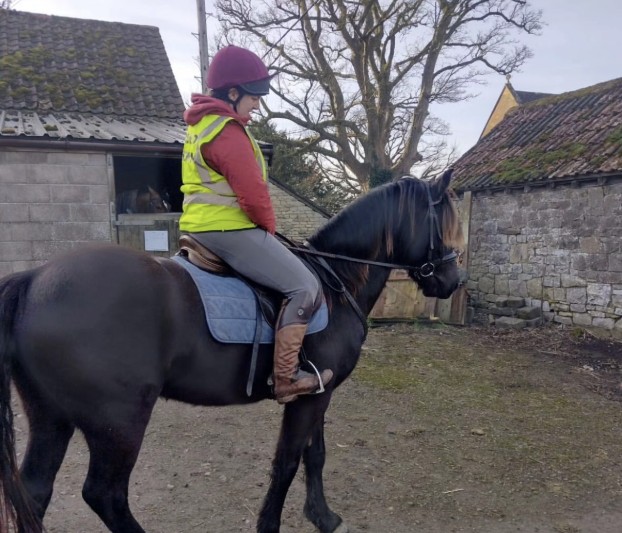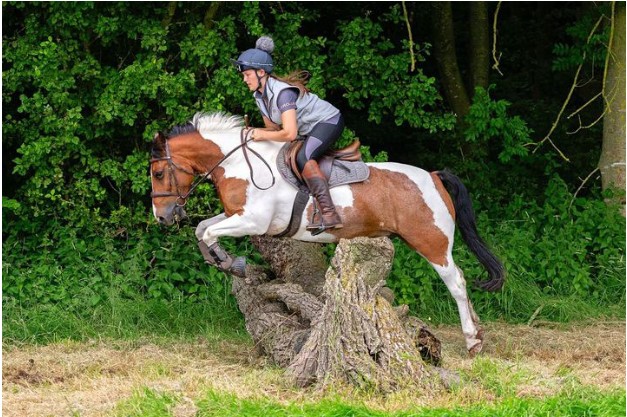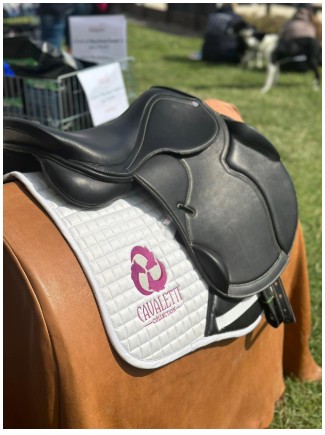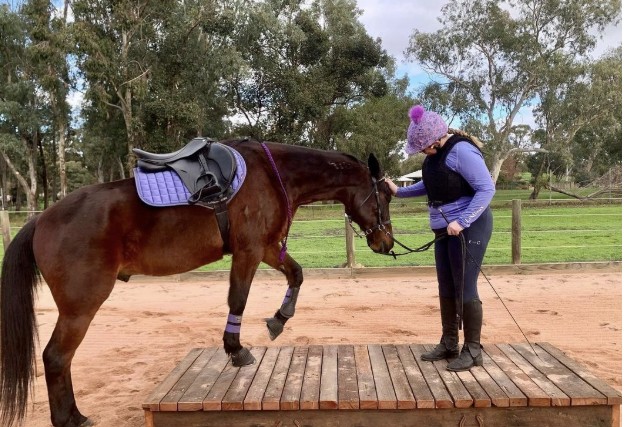Finding The Perfect Saddle: Our 14-Day Free Trial
Finding The Perfect Saddle: Our 14-Day Free Trial
What are the different types of saddles?
When it comes to horse riding, the saddle is an essential piece of equipment that ensures both the rider's comfort and the horse's well-being. There are various types of saddles available, each designed for specific disciplines and horse sizes.
Here are some different types of saddles, including Dressage, Jump, GP, Pony, and Show saddles.
1. Dressage Saddles:
Dressage saddles are specifically designed for the discipline of dressage, which focuses on precise movements and communication between the rider and the horse. These saddles have a deep seat and long, straight flaps that allow the rider's leg to hang straight down. They provide excellent support and help the rider maintain a correct position while performing intricate movements.
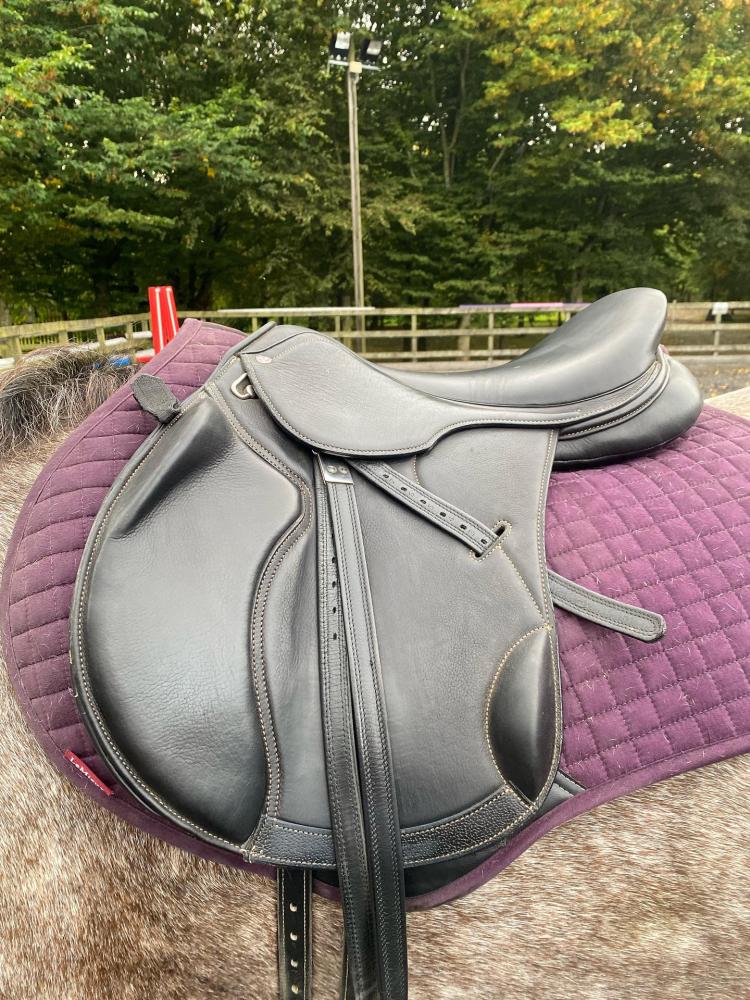 2. Jump Saddles:
2. Jump Saddles:
Jump saddles, as the name suggests, are designed for jumping activities such as show jumping and cross-country. They have a forward-cut flap that allows the rider to have a shorter stirrup length, enabling them to have a more secure and balanced position while jumping. Jump saddles also have a flatter seat compared to dressage saddles to give the rider more freedom of movement.
3. GP (General Purpose) Saddles:
General Purpose saddles are versatile and suitable for various disciplines, including dressage, jumping, and hacking. They strike a balance between the deep seat of a dressage saddle and the forward-cut flap of a jump saddle. GP saddles are great for riders who participate in multiple disciplines or enjoy recreational riding.
4. Pony Saddles:
Pony saddles are specifically designed for smaller horses and ponies. They have a shorter tree length, a narrower gullet, and a smaller seat size to accommodate the proportions of these equines. Pony saddles are often lighter in weight to prevent overburdening the smaller animals.
5. Show Saddles:
Show saddles are designed to make a statement in the show ring. Show saddles can be found in various styles, including dressage, jumping, and western saddles, depending on the specific show discipline.
Cavaletti Collection is a fantastic choice for riders looking for high-quality, comfortable, and stylish saddles to enhance their equestrian experience. We offer a diverse selection of high-quality saddles for riders of all disciplines with a 14-day free trial. Which we encourage you to ride in your saddle as much as possible and take part in all of your riding activities during this time.
Whether you are a dressage enthusiast, a passionate show jumper, or a recreational rider, we at Cavaletti Collection offer saddles that cater to your needs ensuring both the rider and the pony can perform at their best!
How to find a saddle that fits my horse?
Finding the right saddle that fits your horse is crucial for both the comfort and performance of your equine partner. A well-fitting saddle ensures that your horse can move freely, without any discomfort or potential health issues. Whether you are a professional rider or a recreational one, taking the time to find the perfect saddle for your horse is essential. 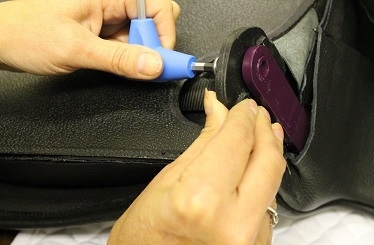
Here are a few tips to help you in your quest for the ideal saddle fit.
1. Understand the Importance of Saddle Fit:
Before delving into the process of finding the right saddle, it's essential to grasp why a proper fit matters. An ill-fitting saddle can cause discomfort, pain, and even long-term damage to your horse's back. It can lead to soreness, muscle atrophy, and behavioural issues. Therefore, investing time and effort into finding a saddle that fits correctly is crucial for your horse's well-being.
2. Assess Your Horse's Back and Body:
To begin your search, it's essential to assess your horse's back and body. Every horse is unique, and their conformation plays a significant role in determining the saddle fit. Start by evaluating the shape of your horse's withers, back, and shoulder area. Take note of any prominent or unusual features that might affect the saddle fit.
3. Seek Professional Help:
If you are unsure about assessing your horse's conformation or finding the right saddle, it's highly recommended to seek professional help. An experienced saddle fitter can provide valuable guidance. They can accurately evaluate your horse's back and suggest suitable saddle options based on their expertise.
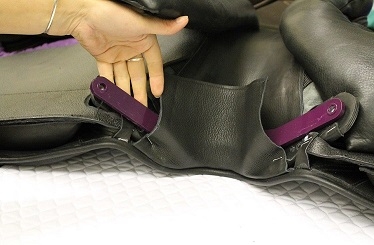 4. Try Different Saddles:
4. Try Different Saddles:
Once you have a general idea of your horse's conformation and the type of saddle that might suit them, it's time to try different saddles. Visit local tack shops or consult with saddle fitters who offer trial saddles. Trying different saddles allows you to assess the fit, comfort, and performance of each one on your horse.
5. Pay Attention to Key Areas:
When trying out different saddles, pay close attention to specific areas that significantly impact the fit. These areas include the withers, the gullet clearance, the panels, and the overall balance. The saddle should provide enough clearance over the withers, allowing unrestricted movement. The panels should distribute the rider's weight evenly and not create pressure points. The saddle's balance should be such that it doesn't tip forward or backwards during riding.
6. Consider Pad and Shim Options:
In some cases, even with a well-fitted saddle, you might need additional padding or shims to achieve a perfect fit. A professional saddle fitter can guide you in choosing the right pads or shims to address any minor fitting issues. These adjustments can make a significant difference in ensuring your horse's comfort.
Remember, finding the right saddle is an ongoing process. As your horse's body changes with age, training, or fitness level, the saddle fit may need to be reassessed periodically. Regularly checking your horse's back and consulting with professionals can help you maintain a comfortable and well-fitted saddle for your equine companion.
So, invest the time and effort required to find a saddle that fits your horse perfectly – it will undoubtedly pay off in the long run!






